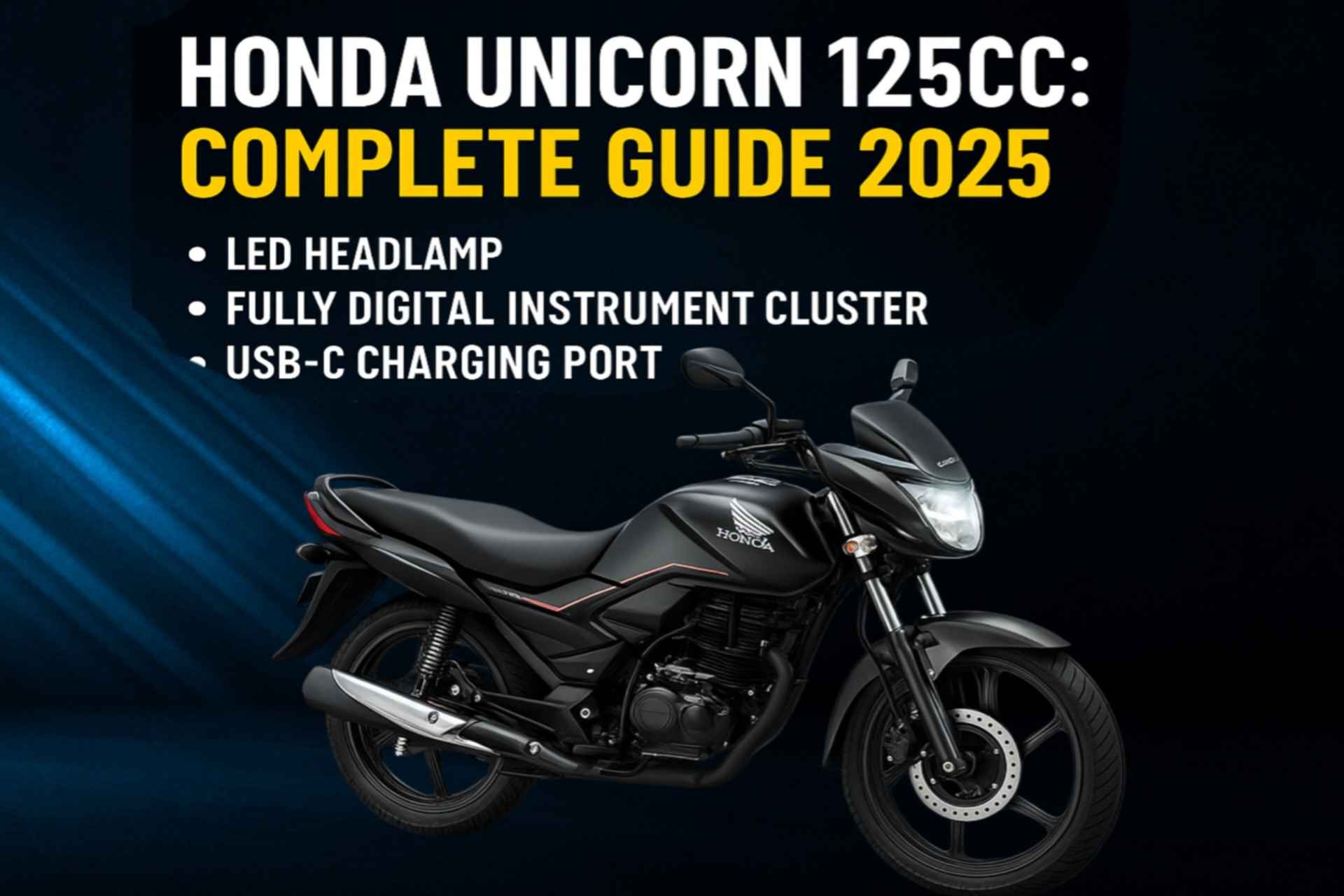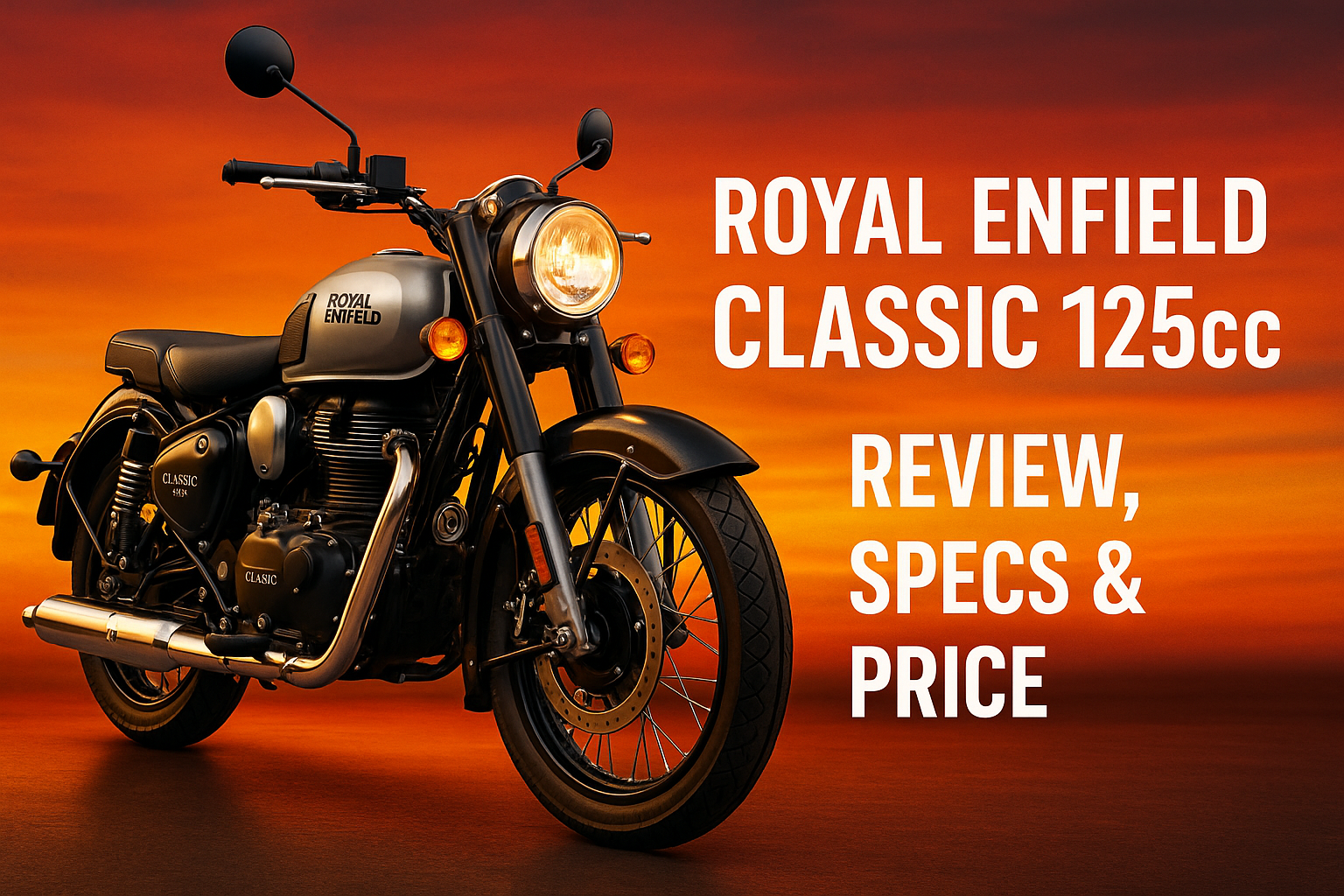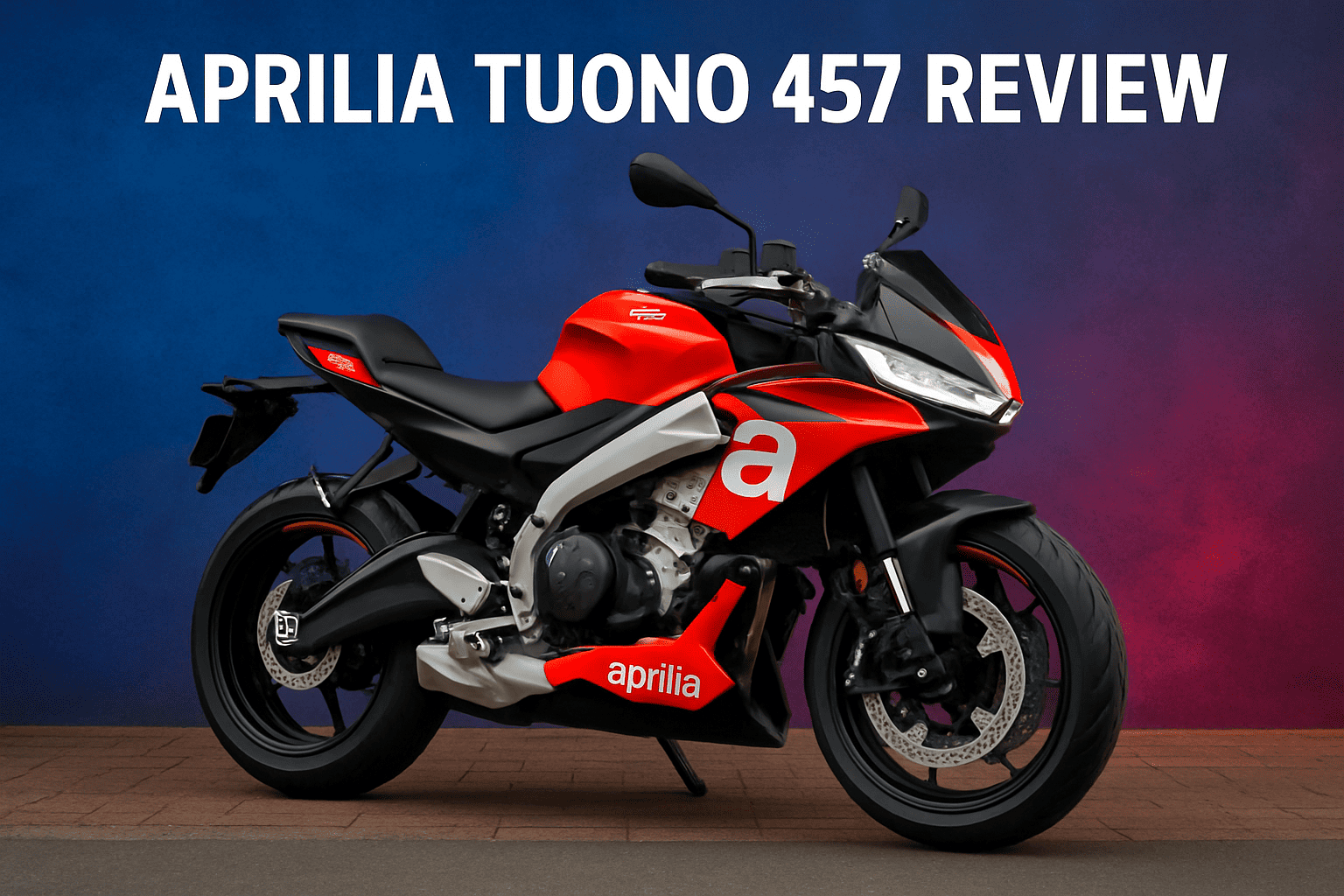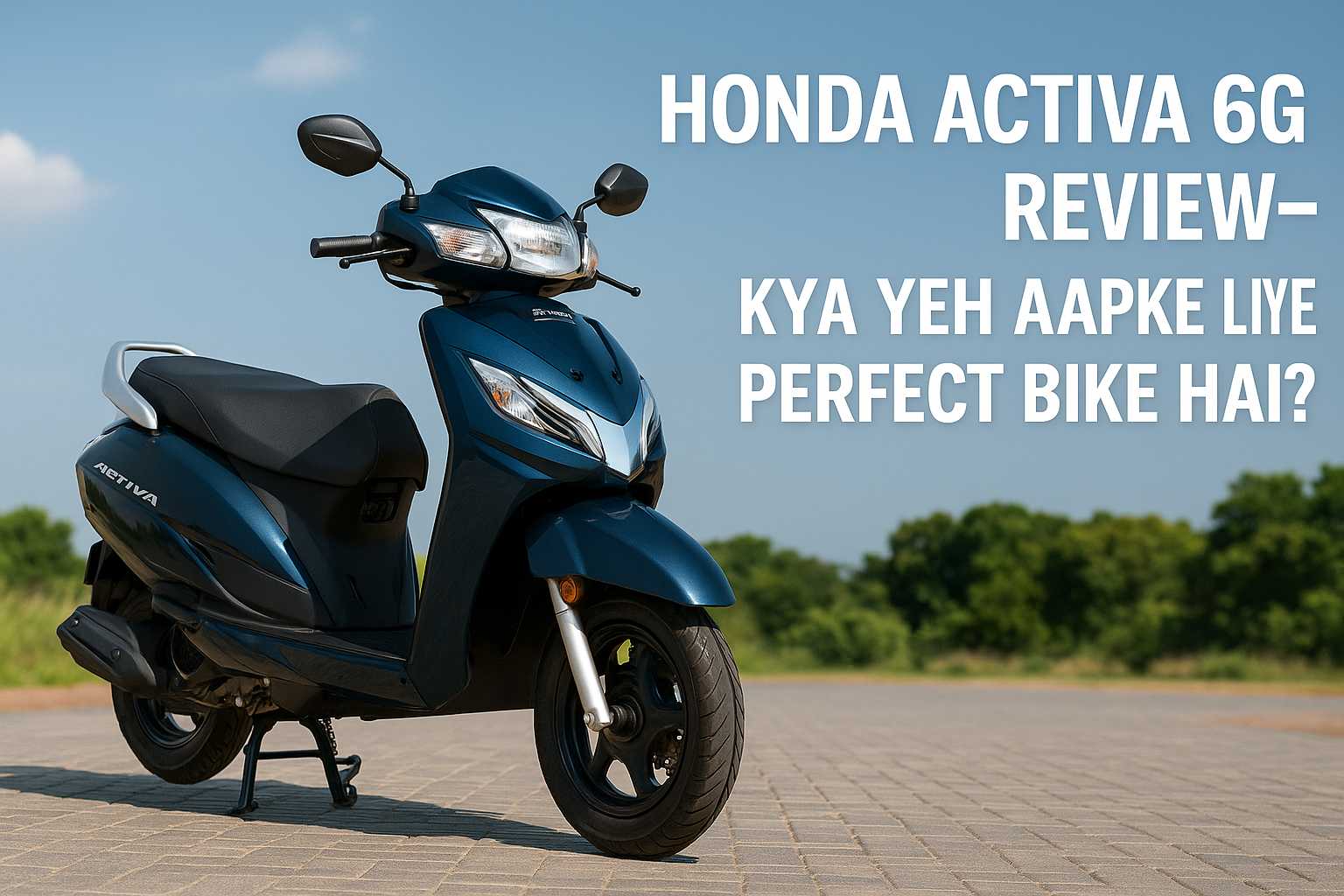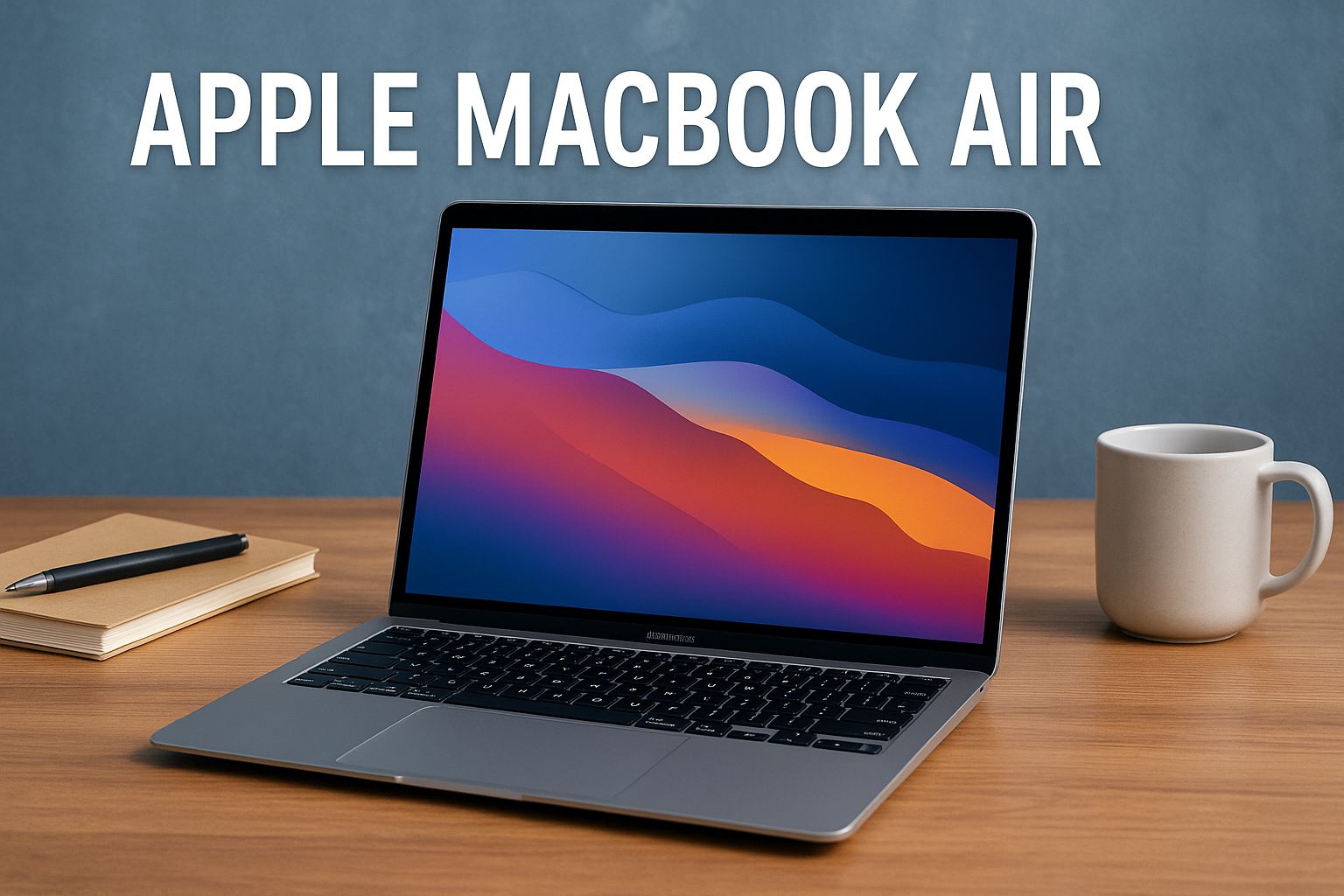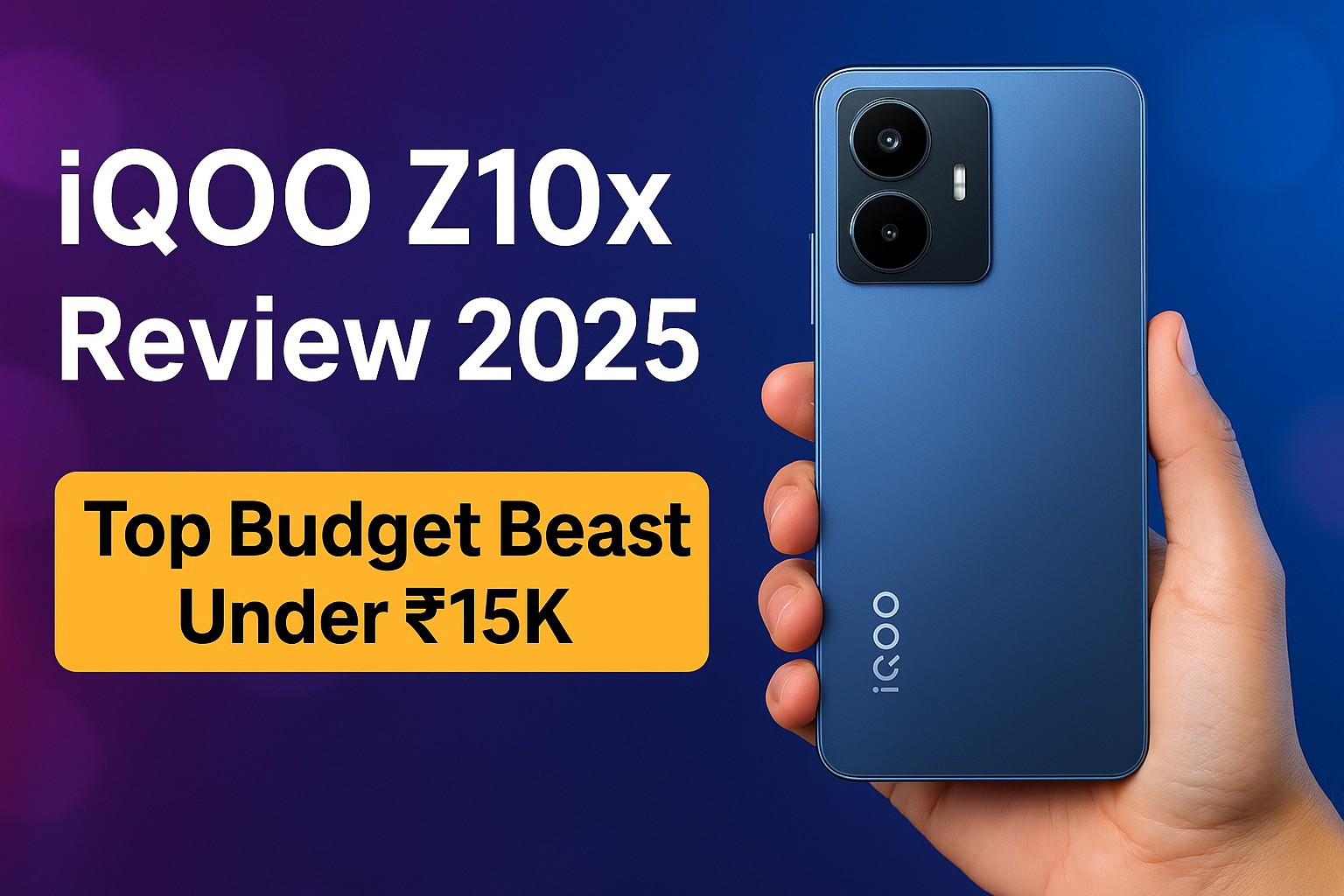2025 Honda Unicorn – Full Deep Research Review
Introduction
The Honda Unicorn has long been one of India’s most respected commuter motorcycles. Known for its reliability, smooth engine, and overall riding comfort, it has catered to riders who want a practical, no-nonsense bike that lasts. In December 2024, Honda released the 2025 version of the Unicorn with some important updates—particularly in compliance, features, and emissions. This review brings together facts and real-world data on specs, price, performance, mileage, comfort, safety, and ownership costs. The goal is to give you enough info (without hype) so you can decide if it’s the right bike for you.
What’s New in 2025
Before we dive into specs, here are the key updates for the 2025 Unicorn:
- Engine Upgrade & Emissions Compliance: The new model is powered by a 162.71 cc single-cylinder engine which now complies with OBD2B regulations. This is part of India’s effort to meet stricter emission norms.
- Styling & Features: A new LED headlamp with chrome surroundings, fully digital instrument cluster, USB-Type C charging port have been added. Also colors have been updated: Radiant Red Metallic, Matte Axis Gray Metallic, Pearl Igneous Black; the older Pearl Siren Blue has been dropped.
- Price Change: With these updates, Honda has increased the ex-showroom price modestly (around ₹8,180 over previous model). The 2025 version is priced ex-showroom at ~ ₹1,19,481 (Delhi).
These changes show Honda is trying to keep the Unicorn competitive with modern commuter bikes, especially because rivals are adding features and stricter emission norms force updates anyway.
Honda Unicorn Technical Specifications
Here are the verified specifications for the 2025 Honda Unicorn:
| Parameter | Value |
|---|---|
| Engine displacement | 162.71 cc, single-cylinder, air-cooled, fuel injected. |
| Power | ~ 13.18 PS @ 7,500 rpm |
| Torque | ~ 14.58 Nm (official) at ~5,250 rpm |
| Gearbox | 5-speed manual |
| Frame | Diamond-type chassis |
| Brakes | Front: 240 mm disc; Rear: drum. Also, single-channel ABS (front) |
| Suspension | Telescopic front fork; rear monoshock |
| Tyres & Wheels | Alloy wheels; tubeless tyres. Sizes: Front 80/100-18, Rear 100/90-18. |
| Weight (Kerb) | ~ 139 kg |
| Fuel tank capacity | 13 litres |
| Ground clearance | ~ 187 mm |
| Seat height | ~ 798 mm |
Honda Unicorn Performance & Real‐World Mileage
Claimed Mileage
The 2025 Unicorn claims around 50 kmpl in mixed usage conditions, according to sources like BikeDekho. This is a more realistic figure than some very optimistic claims.
ARAI / Test Mileage
Some information:
- ARAI test result for the older CB Unicorn 160 (pre-update) shows ~ 62 kmpl under ideal test conditions.
- Experts and testers for the updated 2025 version have similar “real mileage” around 50 kmpl under typical city/highway mix. BikeDekho reports this.
What to Expect in Real Use
Real mileage depends heavily on:
- Riding style: Sudden acceleration, frequent braking reduce mileage.
- Traffic conditions: Congested city traffic lowers the figure.
- Maintenance: Clean air filter, timely oil changes help.
- Payload: Pillion + luggage = drop in efficiency.
From owner reports, many get 50-55 kmpl in mixed city/highway riding with good maintenance. There are fewer reliable public reports of 60+ kmpl in real usage (unless under very mild conditions).
Honda Unicorn Price & Variants
- Ex-Showroom (Delhi): ~ ₹1,19,481 for the 2025 Unicorn with the updates.
- In other cities, price will be slightly higher due to RTO, taxes, road fees. For example, Delhi’s ex-showroom is baseline. Kolkata on-road could add 10-20% depending on state taxes, insurance, etc.
- There seems to be one main variant (STD) for 2025 with new features; older variants with fewer features are either phased out or less promoted.
Honda Unicorn Comfort, Design & Practical Features
Here’s what you get beyond engine & power:
Design & Styling
- The overall silhouette remains close to earlier Unicorns: commuter-oriented, classic tank shape, with Honda’s build quality.
- Added style touches: chrome surrounds around the LED (headlamp), coloured metallic paints. These are more cosmetic but improve presence.
Instrumentation & Convenience
- Fully digital meter / LCD cluster displaying speedometer, odometer, trip meter, gear position indicator, eco-mode indicator, and service due indicator.
- USB-Type C charging port for mobile device charging. A useful convenience in 2025.
Comfort & Ride Quality
- Long padded seat for both rider and pillion: seat height ~798 mm helps moderate height riders as well.
- Suspension setup (telescopic front + monoshock rear) is tuned more for comfort than sport. That means potholes are handled decently; ride is not sharp/stiff. Real-world reports say it feels composed in city and stable on highway. (Though exact road-feel depends on tyres, load, speed.)
- Kerb weight 139 kg is moderate for a 160-cc bike; helps in maneuverability in traffic.
Honda Unicorn Safety & Handling
These are the safety-relevant features to know:
- Single-channel ABS on front wheel. Rear brake is drum. This gives better control in slippery surfaces or emergency braking.
- Side-stand engine cut-off: prevents engine running when side stand is down. Good safety feature.
- Automatic Headlamp On (AHO): headlights automatically on which helps visibility in low light.
- Bright LED headlamp helps for visibility, though some users have reported that in certain conditions (rain, fog) even LED is not enough if beam pattern or reflector quality is not perfect. (These are user reports.)
- Brakes: front disc of 240 mm gives good stopping power; rear drum is conventional but acceptable for commuter use. Heavy braking with pillion or at high speed will test its limits.
Honda Unicorn Pros & Cons
Here are the strengths and possible weaknesses, based on what owners & reviewers have reported, combined with specifications.
Pros
- Reliability & Build Quality: Honda has longstanding reputation; many owners report low mechanical issues even after many km.
- Smooth Engine: The 162.71 cc engine is refined, not overly vibey, especially in mid-rpm range. Good for urban cruising.
- Practical Features: LED headlamp, USB-C charging, digital display, service due indicator — upgrades that add utility.
- Fuel Efficiency: For its class and displacement, ~50 kmpl real world is good. Lower running costs.
- Comfortable Ride: Balanced weight, decent ground clearance (~187 mm), seat comfort makes city riding and moderate highway rides bearable.
Cons
- Not a Big Power Monster: At 13.18 PS / ~14.58 Nm, it’s not going to beat sport bikes or performance-oriented 160cc machines in acceleration. If you want aggressive pickup, there are better options.
- Rear Drum Brake: For high speed or pillion load braking, drum brake at the rear has limitations compared to rear disc.
- Looks are Conservative: Many reviewers say the design hasn’t drastically changed; for those looking for flashy or radical styling, this is not it.
- Feature Gaps: Even with updates, some features that rivals offer (dual-channel ABS, ride modes, adjustable suspension) are missing.
- Weight & Handling at Speed: At higher speeds or when cornering aggressively, stability is okay but not sporty. Also passenger + load increases struggles on inclines.
Related Post
Ownership Cost & Running Costs
Here are realistic costs to expect over ownership, maintenance etc.:
| Cost Factor | Estimate / Info | Notes |
|---|---|---|
| Initial Purchase Cost | ~ ₹1,19,481 ex-showroom (Delhi) for 2025 model. | |
| On-Road Price (Other Cities) | Likely to be ~ ₹1.35‐₹1.50 lakh depending on state taxes, RTO fees, insurance, accessories. Estimate based on typical markups. | |
| EMI Estimate | For full price + small down payment, monthly EMI could be around ₹4,000-₹5,500 depending on loan tenure, interest rate. Estimate based on current two-wheeler financing norms. | |
| Service / Maintenance | First service usually early (like 1,000 km), regular servicing every ~4,000-6,000 km. Costs vary; oil changes, consumables, labour are modest but accumulate. Extra features (digital cluster, LED) may marginally increase electrical maintenance. | |
| Tyres & Consumables | Tyres (front + rear), chain, brake pads, filter replacements as per use. These can cost several thousands over years. Better to use good quality tyres to avoid frequent replacement. | |
| Depreciation & Resale | Honda bikes usually retain value well. After 3-5 years, expecting ~60-70% resale value is reasonable if bike is well maintained. Features, condition, mileage will influence. | |
| Fuel Cost | If you ride ~1,000 km/month, with fuel price ~₹100-₹110/L (varies by city), expecting fuel expense of ₹2,000-₹2,500 for that distance (if mileage ~50‐55 kmpl). |
honda unicorn on road price
| City | On-road Price Approx. |
|---|---|
| Delhi | ₹ 1,44,107 |
| Mumbai | ₹ 1,45,095 |
| Bangalore | ₹ 1,59,891 |
| Pune | ₹ 1,46,736 |
| Hyderabad | ₹ 1,53,249 |
| Kolkata | ₹ 1,46,247 |
Comparison with Rivals
To see where the Unicorn stands, let’s compare briefly with a few similar 150-160cc commuter bikes.
| Rival | Power / Torque | Important Features Rivals Offer | Where Unicorn Edges Out / Lags |
|---|---|---|---|
| Bajaj Pulsar 150 / Pulsar 160 | Often more aggressive styling; better pickup; sometimes rear disc in higher trims. But may produce more vibration. | Pulsar offers sportier looks, possibly more torque at lower rpm, sometimes dual disc/dual channel ABS in some markets. | Unicorn is smoother, more comfortable, more focused on refinement and reliability; styling more conservative. |
| TVS Apache RTR 160 | Strong performance, sharper handling. Features may include split seats, more tech. | Better acceleration, more aggressive moves. | Unicorn wins in long-term comfort, ease of maintenance, smoother ride. |
| Hero Xtreme 160 | Trendy looks, more youth appeal, possibly more features (LED etc). | Often packed features for price. | Unicorn offers more trusted after-sales, better ride comfort, less likely to have niggles if well cared. |
So, if your priority is performance + features, rivals may look more tempting. But if your priority is reliability, comfort, and a smooth, low fuss experience, Unicorn is very strong.
Wildcard: What About the Unconfirmed / Expected 125cc Variant?
Your original article mentioned a 125cc variant expected. As of the latest confirmed reliable sources, there is no official detailed release data on a 125cc version for 2025 with the same level of features. Some articles refer to expected or speculative pricing for a “smaller version,” but nothing is verified by Honda at present (as of mid-2025). So make decisions based only on what is officially out (i.e. 162.71 cc version) unless Honda issues an official announcement.
FAQs about Honda Unicorn
What is the price of the 2025 Honda Unicorn in India?
The 2025 Honda Unicorn (162.7cc) has been relaunched at roughly ₹1.19–1.21 lakh (ex-showroom) in India. This represents about an ₹8,000 increase over the previous model. (On-road prices in major cities will be higher after taxes and insurance.)
What are the key updates and features in the 2025 model?
The 2025 Unicorn gets several modern upgrades while retaining its classic design. Key new features include:
- LED lighting: A new all-LED headlamp replaces the old halogen unit.
- Digital instrumentation: A fully digital LCD console now shows speed, gear position, an “Eco” riding indicator and service alerts. (It also includes a tachometer.)
- USB-C charging: A 15W USB Type-C socket is added for charging devices.
- Updated engine: The air-cooled 162.7cc single-cylinder engine is now OBD2B-compliant and makes about 13.1 bhp with 14.58 Nm torque.
Aside from these, the 2025 Unicorn retains its reliable 5-speed gearbox, front disc/rear drum brakes with single-channel ABS, and Honda’s monoshock rear suspension.
What is the mileage/fuel efficiency of the 2025 Honda Unicorn?
Honda claims around 50 km/l for the new Unicorn With a 13‑litre fuel tank, this translates to a very long riding range (~600+ km) between fill-ups. In real-world use riders typically report about 45–50 kmpl in mixed city and highway riding – making it one of the most fuel‑efficient bikes in its class.
Will Honda launch a 125cc version of the Unicorn?
As of mid-2025 there is no official announcement of a 125cc Unicorn. All current news and press releases from Honda India mention only the 162.7cc model. Any reports of a 125cc Unicorn are speculative. (Honda has not released any details or timeline for a Unicorn 125; if it happens, it would likely share parts with Honda’s existing 125cc models, but that is unconfirmed.)
Is the Honda Unicorn 2025 a good commuter bike (worth buying)?
Many riders still value the Unicorn for its smooth, refined engine and comfort. Reviews note its very smooth ride quality, excellent low‑end torque and relaxed seating – traits that made it a classic commuter bike. It also continues to deliver very good fuel economy and is generally cheap to maintain.
That said, buyers should be aware of its downsides. The design is quite dated and it lacks modern features (no Bluetooth or navigation, just basic analog controls). Its price is on the higher side for a 160cc commuter, given the limited tech on offer. In short: if you prioritize reliability, comfort and mileage in a simple package, the Unicorn remains a sensible choice. If you need cutting-edge features or aggressive styling, you may find more value in newer competitors.
How is the maintenance and running cost of the Honda Unicorn?
Owners report that the Unicorn is highly reliable and inexpensive to run. Honda’s commuter motorcycles are known for low upkeep, and the Unicorn is no exception. Routine service intervals are typically every 5,000–6,000 km (oil/filter change, safety checks) and are relatively cheap at Honda’s service centers. Spare parts are widely available through Honda’s dealer network. In practice, many riders note that the Unicorn has few mechanical issues and minimal repair costs, making it economical to maintain over years of daily use.
Verdict: Who Should Buy the 2025 Unicorn, and Who Else Should Look
Based on the research and real-world reports, here are suggestions:
Best fit:
- Riders who want a durable, low-maintenance commuter — daily use, maybe some highway rides, with long life, not many breakdowns.
- People who value comfort and smoothness more than sporty looks or loud performance.
- Those who ride regularly in mixed conditions (city + highway) and prefer fuel efficiency and decent mileage.
- Those who care about after-sales service, spare parts availability (Honda network is strong).
Not ideal if you:
- Want a high top speed, fast acceleration, or sportbike-like performance from a commuter.
- Prefer flashy or radical design, aggressive riding posture.
- Need dual-channel ABS, ride modes, or other premium features common in higher-end bikes.
- Your budget is tight and even the updated price becomes a factor.
Final Words
The 2025 Honda Unicorn is a mature update to a proven design. With OBD2B compliance, small tweaks in features, and modest price hike, it strengthens Unicorn’s position in the commuter segment. If you measure value in reliability + comfort + real-world fuel efficiency, it delivers well. It doesn’t try to impress with flashy features or over-the-top performance, and that is its strength—it remains classic, dependable.
If you’re buying a commuter bike for daily use, want less hassle, good fuel efficiency, and comfort over style or speed, the 2025 Unicorn is a strong option. If your priorities are more on sport, ride feel, or very high specs, then also check what the rivals offer.
